
login=>XXX


RESOURCES:
Regenerative Biology
=>Scientist Lecture Videos
Neurobiology
=>Scientist Lecture Videos
Immunology
=>Scientist Lecture Videos
The Biology of Cancer
=>Scientist Lecture Videos
心臟血管系統o 呼吸系統o 消化系統o 腎臟泌尿系統 o內分泌系統o 新陳代謿系統 o 血液淋巴系統 o 皮膚系統 o神經系統o 肌肉骨骼系統 o 生殖系統o 免疫系統
Classificatioon of Tumour/Cancer肿瘤分类列表:
神经系统 神经胶质瘤// 脑膜瘤// 先天性肿瘤 // 颅内转移瘤// 脑垂体腺瘤// 听神经鞘瘤// 血管网织细胞瘤//呼吸系统 鼻咽癌// 肺癌// 造血系统 急性白血病 // 慢性粒细胞性白血病 // 慢性淋巴细胞性白血病// 恶性淋巴瘤/ 内分泌系统 甲状腺癌 //泌尿生殖系统// 肾癌//肾盂肿瘤// 输尿管肿瘤// 膀胱肿瘤// 前列腺癌// 睾丸肿瘤// 阴茎癌// 外阴癌//阴道恶性肿瘤// 子宫颈癌// 卵巢癌// 恶性葡萄胎// 绒毛膜癌// 子宫肌瘤// 子宫内膜癌// 其它泌尿生殖系统肿瘤//消化系统 胃癌// 食管癌// 贲门癌// 肝癌// 胆囊癌// 胆管癌// 胰腺癌// 肠癌 大肠癌//直肠癌// 结肠癌//其它肿瘤乳腺癌// 皮肤癌// 恶性黑色素瘤// 软组织肿瘤//骨及关节肿瘤骨肉瘤// 骨肿瘤// 其它骨肿瘤//
Diagnosis and therapy on cancers:
肿瘤诊断 化学治疗 放射治疗 生物治疗 中医疗法 心理治疗 辅助治疗 另类疗法
Miscellanious:
瘤的草药疗法// 射频消融// 肿瘤的全淋巴结照射(TLI)// HDR腔内治疗癌性肺不张////
肿瘤的保器官治疗// 控制高压氧舱氧浓度的经验体会// 全身热疗治疗胃肠道肿瘤取得好//
高压氧治疗一氧化碳中毒案例// 肿瘤热疗的生物学不同时期的特// 全身热疗??第五种抗癌方法// 高压氧治疗病毒性脑炎--真神!//
肿瘤的草药疗法:
常用草药 :草药是植物整株,或一部分,常被用来作调味品(烹调用草药)或治疗健康问题(医用草药)。几千年以来,世界各地的人们都把草药用作药物。今天,成千上万的人使用草药治疗法来预防和治疗各种健康问题。 许多植物都含有能对人体产生治疗效果的物质。例如,最早用来治疗疟疾的奎宁就取自于树皮。阿斯匹林的有效成分也取自柳树树皮中的水杨酸盐。但是真正起作用的是草药中的化学成分,而不是整个草药及其它的形状或颜色。草药中的化学物质,只有经科学试验证明了它的功效和安全性后,才能用作药物。不同的是,草药治疗是整个草药起作用,而它的各种化学成分的安全性和功效并未经试验证明。 近年来,人们对另类的和补充的医疗方法(包括草药疗法)的兴趣大增。调查显示美国超过半数的人定期使用草药产品。其中常用的有:紫锥花、大蒜、生姜、银杏、人参。 如果要使用草药疗法或其它另类治疗方法,病人与医生进行交流很重要。美国癌症协会要求癌症患者在运用已经公认的和临床试验有前途的治疗方法的医生处接受治疗。鼓励患者与医生就另类治疗法进行交流及考虑伴随主流(传统)治疗法的有益的补充治疗法。 紫锥花 :紫锥花是一种生长于北美的野花,印地安人把它用于治疗伤口和呼吸感染。十九世纪后期以来,这种植物常被用于治疗感冒、梅毒等一系列病症。 紫锥花的主要作用据说是可以提高抵抗感染的能力。从它的根茎榨出的汁能提高人体的免疫能力。现在,许多人用它来预防和治疗感冒与流感。 这种植物含有不少的活性化合物,包括菊粉、多糖和脂肪酸。其中的某些,看起来能加快白细胞的产生和提高它的活性,而白细胞的作用就是攻击和破坏血液中的细菌及其它致病侵入物。紫锥花还加快有助于控制免疫系统活动的化学物质cytokines的生成。 紫锥花的传统用法,包括治疗细菌、病毒和酵母引起的感冒和传染病都是有效的,它对消炎也有疗效。 人们正尝试把紫锥花作为治疗癌症等疾病的方法。一些实验研究发现,紫锥花刺激白细胞间介素、干扰素和肿瘤坏死因子(控制癌细胞生长的化学物质)的释放,但另一些研究没有此发现。紫锥花是否对人体具有抗癌作用尚不清楚,而且,用药标准及其毒性也不知道。 建议: 使用紫锥花前同医生商量,特别是当您患了狼疮等自身免疫疾病或AIDS、肺结核时。 大蒜 :大蒜(葱属植物),作为洋葱科的一种,几千年来都被用作食物和草药。大蒜长有象枪一样的长而平的叶子(大蒜在英语中的意思是“象枪的植物”)。它的球茎由一簇分开的叫做丁香的瓣组成,外面包有一层象纸一样的皮。古希腊医生相信:大蒜对某些疾病,包括寄生虫感染、呼吸问题、消化不良和精力不够的治疗有帮助。
大蒜生成一种叫做蒜素的含硫化合物,蒜素一旦与酶作用,就转化成其它活性成分。 科学研究确信,大蒜能通过降低血液中胆固醇和甘油三酸酯的含量来预防动脉硬化症。它通过减少血小板粘连和溶解纤维蛋白(阻止结块的蛋白形成危害血细胞的网状)来防止血块生成。大蒜对细菌、病毒、真菌及肠道寄生虫引起的感染也有温和的预防作用。大蒜提取物能激活免疫系统,例如刺激淋巴细胞的繁殖、cytokines的分泌和提高细胞活性。 一些研究显示,人多食用大蒜可以减少得胃癌、食道癌和结肠癌的可能性。动物实验表明,大蒜中的含硫化合物在某些酶的作用下能抑制活性,这就可以解释这种草药的抗癌特性。然而,适用于动物身上的剂量高得人体难以接受,而且,大蒜中的化合物会引发肝癌的恶化。 建议:何种形态的大蒜最好,目前还存在争论:是完全未加工的大蒜呢,还是加工成药片的大蒜;是存蒜呢,还是新蒜;是带有气味的大蒜呢,还是除去气味的大蒜。为了避免口臭或体臭,一些人喜欢选用肠衣包着的大蒜药片(它到小肠后才开始消化)。食用大蒜过多会引起心痛和气胀。 许多人只需通过饮食,就可以满足人体对大蒜的需求量。使用大蒜补品前,请同医生商量。因为这种草药阻止血液凝固,将要进行手术的病人服用前,一定要告诉外科医生。 生姜 :生姜是生长在印度、中国、墨西哥以及其它地区的一种多年生植物。它的根被用来生产生姜调味品、竹芋粉(一种淀粉)和姜黄。传统中医把生姜用来治疗消化不良、呕吐及咳嗽,已有几千年的历史了。印度医学认为生姜对消炎很有疗效。 生姜中的挥发性油(姜酚和姜烯酚)发出辛辣的气味,并产生对人体的治疗效果。生姜及其同类植物中也含有能产生生物活性的化合物棗姜黄素。生姜对人体的消化系统具有疗效,它可以增强消化肌,保护胃不受酒精或非类固醇消炎药对它的刺激。父母们就常给小孩服用姜汁啤酒,用于消除胃疼。虽然人们对生姜如何控制反胃不清楚,但是都知道它能缓解呕吐。 目前正在进行把生姜作为治癌方法的研究。老鼠实验表明,生姜及其同类植物中的姜黄素能抑制皮肤癌的发育,并引发癌细胞的死亡。辛辣化合物可作抗氧化剂,这样就降低了破坏细胞、引发癌症的危险性。 建议: 目前还没有证据表明,生姜对预防和治疗人体癌症具有疗效。服用生姜前,请询问医生。 银杏 :银杏也叫白果树,是地球上最古老的树种。银杏在中国很常见。在中国,银杏被视为神树,常种在寺庙的花园里。银杏叶子的形状象扇子,分成两半。银杏作为草药的历史可追溯到五千年前,现在,它被用来治疗呼吸疾病和老年失忆症。 银杏提取物中含有两种有效成分:生物黄酮和萜内酯。生物黄酮的作用相当于抗氧化剂,可以清除自由基(不稳定的氧分子),防止破坏细胞。它还能降低血小板凝聚,从而阻止血液凝固 。萜内酯的作用在于能改善循环和修复遭破坏的神经细胞。这样,既能增强血液循环(特别是脑部的)又能改善神经系统,就可以解释为什么银杏能预防或缓解老年痴呆症了。
银杏似乎能缓解由年老和动脉硬化症引起供血不足的症状。它可以增强大脑血液流动,从而增大对大脑的供氧量。对老年病人而言,银杏可以缓解眩晕、耳鸣和头痛的症状。据一些人报告,银杏可以缓解腿部疼痛(跛行),提高行走能力。银杏似乎仅对中等程度的失忆和痴呆病人具有疗效。 把银杏作为治癌手段的研究尚处于初级阶段。实验室(“试管实验”)研究表明,某些银杏中的化合物如苯酚,可以抑制人体某些肿瘤的生长。苏联对住在切尔诺贝利核电站泄漏地点附近的人的研究表明,银杏(一种抗氧化剂)能预防核辐射对DNA(细胞的遗传成分)的破坏。银杏能否治疗癌症,还需研究证明。 建议: 某些病人服用银杏后,反映有轻微头痛或肚子痛。服用银杏前,请询问医生,特别当您的循环系统有问题时。人参 :人参是指一类植物,大约有700种。人参生长在热带和气候温和的地方,常见于美洲和亚洲。人们相信,人参的根具有医疗特性。用于治疗的人参主要有两种:亚洲人参(亦称中国参或高丽参)和西伯利亚人参。美国另类医学常用到的一种美国人参,叫做西洋参。人参的学名Panax来自希腊文Panacea,意指“万能药”。中国人参被作药用已有两千多年的历史了,它可用来提高精神和增强活力。一些人相信,人参能对肾上腺产生作用,可被用作壮阳药和“减压药”(解除精神压力)。 中国人参中含有大量化学物质,它们共同作用产生良好的疗效。现已确定,超过十二种的人参皂甙可以提高精神、解除压力和提高体力及智力。人参中的其它化合物可以降低血糖和提高免疫系统能力。 西伯利亚人参用于预防感冒、流感和呼吸道感染。某些人声称它能增强精力和耐力。这种草药中的一组化合物五加甙,也有生理疗效。西伯利亚人参与亚洲人参一样,同样含有多糖。倡导者声称,人参可以提高肌肉耗氧能力,从而减少人体中的毒素。 人们食用人参已有很多年了,只是它的功效是被大大地夸大了。西方国家进行的科学研究,还没有得出很多可以确认人参这些生物活性的数据。过量食用人参会毒害身体,例如使人呕吐、出血甚至致死。试管实验显示,人参可以刺激免疫细胞和活化天生杀手细胞,来抑制肿瘤的生长。人们发现,一种人参皂甙化合物可以增强某种化疗药物顺氯氨铂预防卵巢癌扩散的能力。 1990年,韩国研究发现,食用人参的人患癌症的可能性小于那些不食用的。研究还发现,人参提取液和人参粉末的效果比新鲜的人参切片、人参汁或人参茶好。把人参加入日常食物中,也使南韩人降低了患胃癌的危险。中药产品不受(药品管理法规)管理。试验发现,许多人参产品中的有效成分不如它许诺的那样多;一些根本就没有含有人参根。 建议: 人参作为一种刺激物,可能引起神经紧张或兴奋,因此,临睡前不要食用。食用人参时,不要饮用咖啡或其它含咖啡因的饮料。血压高或头痛的人亦避免用人参,因它可能加重病情。一些绝经期的妇女反映,人参引起阴道出血。如果您考虑服用人参或其它中药,请咨询医生。膀胱肿瘤的中医用药
Cancer in Traditional Chinese Medicine
According to Global Cancer Statistics 2002, there are 10.9 million new cases, 6.7 million deaths and 24.6 million persons alive with cancer (within three years of diagnosis) around the world. With improved detection and treatment methods, more and more people are now living with cancer. However, distressing complications such as emaciation, hair loss, bleeding and infection still affect patients. Traditional Chinese medicine (TCM) has a definite advantage in dealing with these.
In TCM history, tumors were discussed as early as 4,000 years ago on oracle bones. Malignant tumors were first recorded in the Song dynasty (AD 960-1279), which described them as masses that were rock-firm and had uneven surfaces. Over the centuries, TCM has accumulated much knowledge on how to treat cancer. For example, insect products such as earthworms, ground beetles, blister beetles and scorpions, or toxic ingredients like dried toad venom, nux vomica and cinnabar, are still used as the basis of present-day therapies. In China, although the traditional therapies are gradually being replaced by more modern methods, TCM's role in overall bodily enhancement and protection still remains a norm among cancer regimens.
From a TCM perspective, cancer is a systemic disorder and the uncontrolled growth of malignant cells is only part of the whole complex manifestations, individuals also have certain organ dysfunctions, meridian disorders and so on. TCM believes that cancer development is basically due to a weakened body that makes individuals susceptible to different carcinogens. When multiple factors repeatedly act on the body leading to internal disharmony and organ dysfunction, they cause an accumulation of pathological waste products, and these will then induce abnormal growth in certain places. Western allopathic approaches like surgery, radiation or chemotherapy mainly target cancer cells, with little concern about the overall condition of the body. Moreover, the approaches cause further damage to the body. In TCM words, they act powerfully on eliminating the "evils", but do serious damage to the "healthy energy"; as a result, the "habitat" that facilitates the growth of cancer cells still exists and this always brings a poor prognosis. Based on a holistic view of cancer pathology, TCM physicians are able to realize substantial changes in cancer patients through unique examination and diagnostic skills, and along with therapies like herbs, acupuncture, massage or diet that aim at assisting the body to regain balance and achieve homeostasis. TCM can benefit cancer patients significantly and become a useful complement during conventional treatment.
Generally, the approaches used in TCM are less aggressive; they are safe, effective, affordable and accessible to most cancer patients. They control symptoms, shorten recovery time, improve survival rates and quality of life. The main reasons why many people seek TCM treatment for cancer are:
Prevention of cancer development
Symptom management
Reducing the complications of conventional therapies
Arresting progression of the condition
Improvement in quality of life
Prevention of recurrence
TCM Understanding of Cancer Development
Traditional Chinese medicine is an ancient form of medicine. Based on particular oriental views, it has developed its own unique set of theories, diagnosis and treatment. Generally, physicians gather health information by special examination techniques; the information is then interpreted to make a diagnosis according to TCM principles about physiology and pathology. Then appropriate therapies are selected and used in accordance with these TCM principles. These procedures are the only way to employ TCM therapies for optimal efficacy.
TCM believes that there are multiple causes of cancer and these are closely related to environment, diet, lifestyle and emotional strain. If factors that affect blood and qi (vital energy) flows occur over a long period, they can lead to a local accumulation of pathological waste products that induces abnormal growth of tissues inside the body. Although there are different kinds of cancer, TCM has summarized some general pathological characteristics of cancer patients.
Exhaustion of healthy energy:
Due to the rapid and uncontrollable growth of cancer cells, normal tissues and functions are affected progressively, so cancer patients are always in a state of exhaustion and debility. From a TCM perspective, cancer begins to affect the qi in the early stages, and then further consumes the yin and the blood. When primordial energy begins to become exhausted, that means the body's qi, blood yin and yang are almost depleted.
Blood and qi stagnation:
In TCM theory, changes in either blood or qi affect all parts of the body in different degrees. They are the source of body activity and movement as well as the functions of different organs. When the smooth flows of blood and qi are disturbed by certain factors and remain for a long time, the stagnated qi and blood will lead to pathological stagnation which can easily induce cancerous changes.
Phlegm and dampness retention:
There is a saying in TCM that "when there are masses inside the body, they are usually due to phlegm accumulation." Both phlegm and dampness are the pathological waste products from organ dysfunctions, and are mostly attributed to disharmony in fluid metabolism. Under normal circumstances, fluid metabolism is controlled by organs like the lungs, spleen, kidneys, and triple burner. When these organs are affected by the six evils, diet or the seven emotions, they under-function, and the body fluids will not be distributed properly, which in turn lead to the retention of dampness evils and phlegm. Phlegm and dampness have sticky and turbid properties and are likely to cause obstructions.
Toxic heat invasion
Fever is quite common in cancer patients:
According to TCM understanding, this is mainly due to irritation by toxic heat evils. Actually, toxic heat evils are the end products of various kinds of pathological waste that had accumulated inside the body during the progression of the cancer. These highly invasive pathogens in turn directly or indirectly attack the normal tissue or organs, and also promote cancer cells to grow and spread.
Apart from the above pathological analysis, modern TCM physicians also rely on conventional methods to provide specific detail on cancerous changes, as TCM does not use cellular and biochemical tests for detection.
TCM Approaches to Cancer Treatment:
In Traditional Chinese Medicine, "treatment according to syndrome patterns" is the premise for all clinical applications. TCM syndrome patterns are diagnosed from a full complexity of symptoms and dynamic balances of the patient, and they provide guidelines for physicians to select appropriate treatment method(s) as well as to predict the progress of a disease.
TCM physicians always design a comprehensive program for each cancer treatment. On one hand, physicians will employ a holistic method to uplift the general health condition that includes organ functioning, body resistance, immune functions, self-healing power and so on. On a more specific level, physicians may attack the cancer cells directly with specific herbs, such as Curcuma zedoaria (e zhu) in cervical cancer, Cephalotaxus fortunei (san jian shan) or natural indigo in leukemia, and Crotalaria sessiliflora (ye bai he) in skin cancers. Physicians will carefully balance the competing forces between body enhancement and cancer-fighting with treatment being adjusted according to the development of the disease.
The following are the major TCM approaches to cancer treatment:
General tonification:
General tonification aims to replenish the blood and qi, fortify the organs and resume the yin yang balance of the body by methods like herbal prescriptions, acupuncture or acupressure. They can improve the body's ability to fight cancer, relieve complex symptoms and control cancer progression. It helps to reduce complications that arise in conventional therapies and increase the body's tolerance towards radiotherapy and chemotherapy. Studies have shown that many tonifying herbs have the ability to promote lymph cell production, activate the actions of T cells and phagocytosis, elongate the life of antibodies and increase the ratio of cAMP/cGMP. See "The Modulation Effect of Chinese Medicine." These immune activities are particularly necessary for cancer patients' bodies to be able to tackle the cancer. In clinical applications, physicians will target specific organs or deficient aspects of the body according to the individual's condition.
Clearing toxic heat:
TCM believes that toxic heat is the major cause for cancer progression, especially in middle and late-stage patients. Toxic heat brings on swelling lumps, localized pain, fever, irritability, dry mouth and throat, constipation, yellowish urine, and foul discharges. Herbs with cooling properties can counteract the above reactions; these herbs will also, to a certain degree, inhibit the development of cancer cells. Some of the common herbs are:
bai hua she she cao =Spreading hedyotis =Hedyotis diffusa
ban zhi lian =Barbed skullcup =Herba Scuttellariae barbatae
yu xing cao =Heartleaf houttuynia herb =Herba houttuyniae
long kui =Black nightshade= Solanum nigrum
dong ling cao= Blushred rabdosia= Rabdosia rubescens
qi ye yi zhi hua= Maryleaf paris= Paris polyphylla
Supplementing blood and dissipating stasis:
It is believed that the high coagulate state of circulation helps cancer cells to travel along the blood vessels and embed in new areas and grow. TCM regards the condition as blood stasis, which is also associated with tumors, pain in a fixed location, a purplish tongue, purple discoloration of the skin, dry and rough skin, brittle nails and varicose veins. The above conditions can be improved through activating the blood flow and making the blood thinner, which also helps to make the tumor shrink as well as inhibit the growth of its surrounding connective tissues. Some common herbs are:
pu huang =Cattail pollen =Pollen Typhae
dan shen =Red sage root =Radix Salviae Miltiorrhizae
e zhu =Zedoray rhizome =Rhizoma Curcumae
tao ren =Peach kernel =Semen Persicae
ru xiang =Bible frankincense =Boswellia carteri
ling xiao hua =Trumpetcreeper flower =Flos campsis
Dispersing phlegm to soften lumps:
In TCM understandingphlegm and dampness-evil are not only at work during the early stages of cancer development. They keep acting inside the body throughout the whole course of the disease creating a series of complex problems. Dispersing phlegm and dampness is usually indicated for cancer patients presenting with massive lumps, chest and abdominal distention, nausea, vomiting, limb weakness and puffiness, even body fluid retention. Some common herbs are:
ban xia= Pinellia tuber= Rhizoma Pinelliae
dan nan xing =Bile arisaema =Arisaema Cum Bile
gua lou =Mongolian snakegourd =Fructus Trichosanthis
shan ci gu =Common pleione pseudobulb =Pleione bulbocadioides
zao jiao ci =Chinese honeylocust spine =Spina gleditsiae
xia ku cao =Common selfheal fruit-spike =Spica prunellae
Detoxifying with toxic substances:
Sometimes, the complex conditions exhibited by cancer patients may be due to a mix of various pathological toxins, which are difficult to resolve by simply eliminating methods, thus, physicians will then resort to utilize toxic substances to neutralize, the so-called "using poison as an antidote to poison". Actually, many of these toxic substances have been made into modern medicines that are used in chemotherapy in China. It is said that this approach has good results in reducing swelling and pain. Some common herbs for this treatment approach are:
wu gong =Centipede =Scolopendra
ban mao =Blister beetle =Mylabris
chan su =Toad venom =Venenum bufonis
xiong huang =Realgar =Realgar
ma qian zi =Nux vomica =Semen strychni
teng huang =Resina=Garciniae
External TCM anti-cancer methods:
Apart from acupuncture and moxibustion, herbs can be made into different forms for external and topical applications, such as dressings, ointments, washing, steaming, inhalation, suppositories and enemas. They help to ease localized symptoms and can also be used to attack the cancer site directly. For example, herbal dressings may be applied for skin cancer or lymphatic metastases; inhalation methods may be used for lung-cancerand nasopharyngeal carcinoma; liver cancer patients who have developed ascites (fluid retention inside the abdominal activity) may apply herbal dressings for clearing toxic heat and inducing urination.
[Courtesy:SHEN-NONG]
Contributed by Mr Lee Hsien Loong,
Prime Minister of Singapore
(24 August 2001) Motivational Message:
The patient's attitude matters a lot, and so does the support of family and friends. When I was undergoing chemotherapy for lymphoma, I received many messages of concern and encouragement from well wishers. They cheered me up, and helped me to soldier on.
I particularly remember a passage in one book I was given. It said that a positive outlook may or may not cure you of cancer, but it will certainly make the disease easier to bear, and will help you live life to the full despite the cancer. I found this helpful, realistic advice, although not always easy to follow.
When cancer strikes a person or his family, often we are reluctant to talk about it. But there is nothing shameful or unmentionable about having cancer. Talking about it helps you to unburden yourself of worries and fears, and allows others to let you know that you are not alone, and help is available.
CancerStory.com is doing a good job helping Singaporeans to overcome this psychological obstacle. I hope my posting will encourage others who have experienced cancer also to join the CancerStory.com community, and so be of some help to cancer sufferers and their families.
With best wishes Lee Hsien Loong
Healing and Curing Are Deeply Entwined
The Starting Point for Informed Choice
(Adapted from Choices in Healing written by Michael Lerner)
Healing Goes Beyond Curing:
There is a fundamental distinction between healing and curing that lies at the heart of all genuinely patient-centred approaches to cancer treatment and care. This is not some "flaky" New Age distinction, but one rooted in the greatest and oldest continuous traditions of medicine. It is a distinction yet to be fully recognized and honored in mainstream medicine today. But while the distinction between curing and healing is widely recognized, the significance of these two complementary approaches to recovery from cancer is rarely explained to people with cancer.
As the term is generally used, a cure is a successful medical treatment. In order words, a cure is a treatment that removes all evidence of the disease and allows the person who previously had cancer to live as long as he would have lived without cancer. A cure is what the physician hopes to bring to the patient. Curing is what the doctors hope to do, the external medical process of effecting an outcome in which the disease disappears.
Healing, in contrast, is an inner process through which a person becomes whole. Healing can take place at the physical level, as when a wound or broken bone heals. It can take place at an emotional level, as when we recover from terrible childhood traumas or from a death or a divorce. It can take place at mental level, as when as we learn to reframe or restructure destructive ideas about ourselves and the world that we carried in the past. And it can take place at what some would call a spiritual level, as when we move toward God, toward a deeper connection with nature, or toward inner peace and a sense of connectedness.
Although curing and healing are different, they are deeply entwined:
For any cure to work, the physical healing power of the organism must be sufficient to enable recovery to take place. When a physician sets a bone or prescribes an antibotic for an infection, he is doing his part for recovery by offering curative therapy. Yet when the inner healing power of the organism is insufficiently strong, the bone will not knit or the infection will not subside. Healing is thus a necessary part of curing - a fact with profound implications for medicine, since the authentically holistic physician is deeply aware of the essential role his patient's recuperative powers play and will do everything he can to encourage the patient to enhance those recuperative powers.
Healing, however, goes beyond curing and may take place when curing is not at issue or has proved impossible. Although the capacity to heal physically is necessary to any successful cure, healing can also take place on deeper levels whether or not physical recovery occurs. I have had many friends with cancer whom curative treatment ultimately proved impossible. Yet, even as their disease progressed, the inner healing process - emotional, mental and spiritual - was astonishingly powerful in their own lives and in those of their families and friends.
That you can participate in the fight for life with cancer - by working to enhance your own healing and recuperative resources - is a profoundly important discovery for many people. Cancer patients often experience themselves losing all control of their lives. They become the passive objects of all kinds of decisions and treatments by their medical teams. They feel they must do what their physicians tell them. They may feel that they can do nothing to help themselves. Often, no one has offered them the opportunity to consider the distinction between healing and curing.
It is not yet known scientifically how much difference personal efforts at healing can mean in terms of life extension. However, it is clinically known by most psychotherapists who work with cancer that a patient engaged in personal healing work can make a transformative difference in his quality of life. An ever-increasing body of scientific evidence now suggests that a strong desire to live - a willingess to engage in the struggle for life - and a continuous movement toward a healthy relationship with life, do help some people in their fight for physical recovery. Conversely, long-term chronic depression, hopelessness, cynicism, and similar characteristics tend to diminish resilience and increase physical vulnerability.
As someone commented :"Traditional" natural therapies and modern "western" medicine have their own pros and cons and are meant to complement each other.
In major hospitals in China, they are already putting both TCM and modern medicine in one hospital to treat cancer. Surgery and modern diagnostic methods is used to treat the cancer and then TCM to help the patient recuperate.
It's not about which is better and which is not. Doctors should not be biased, neither should the TCM practitioners. But to be well-read and well-informed and know how they complement.
============================================================


















 AT THE EDGE更多情报资料,点击输入o
AT THE EDGE更多情报资料,点击输入o



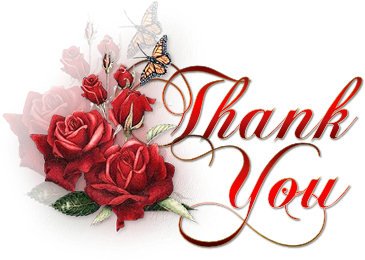

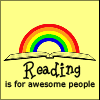
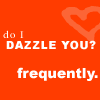


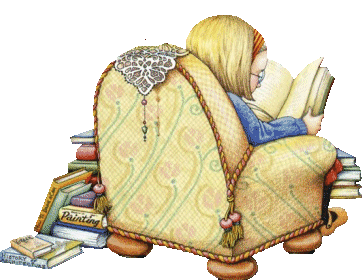


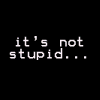



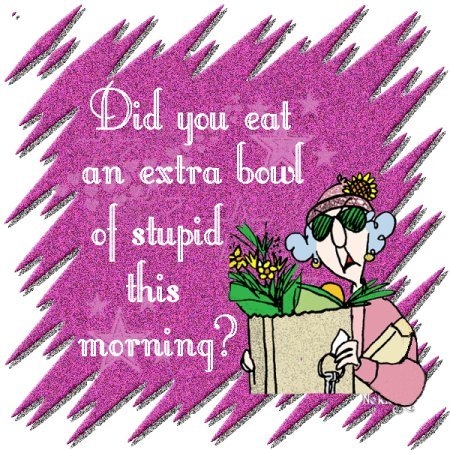
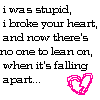
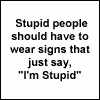

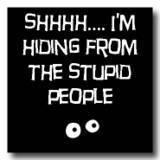
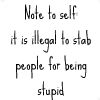

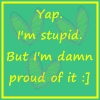








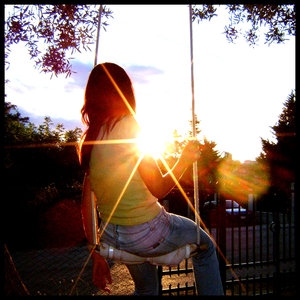

No comments:
Post a Comment